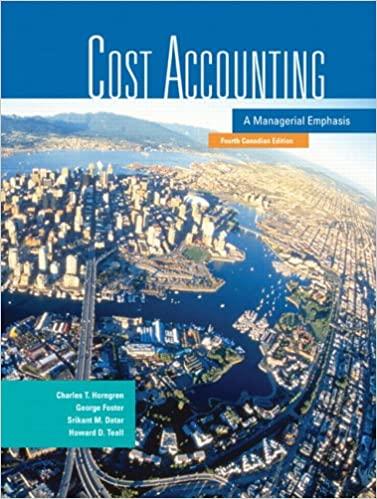Backflushing. The following conversation occurred between Brian Richardson, plant man ager at Glendale Engineering, and Charles Cheng,
Question:
Backflushing. The following conversation occurred between Brian Richardson, plant man¬
ager at Glendale Engineering, and Charles Cheng, plant controller. Glendale manufactures automotive component parts such as gears and crankshafts for automobile manufacturers.
Richardson has been very enthusiastic about implementing JIT and about simplifying and streamlining the production and other business processes.
Richardson: Charles, I would like to substantially simplify our accounting in the new JIT environment. Can’t we just record one accounting entry at the time we ship products to our customers? I don’t want to have our staff spending time tracking inventory from one stage to the next, when we have as little inventory as we do.
Cheng: Brian, I think you are right about simplifying the accounting, but we still have a fair amount of raw material and finished goods inventory that varies from period to period depending on the demand for specific products. Doing away with all inventory accounting may be a problem.
Richardson: Well, you know my desire to simplify, simplify, simplify. I know that there are some costs of oversimplifying, but I believe that, in the long run, simplification pays big dividends. Why don’t you and your staffstudy the issues involved, and I will put it on the agenda for our next senior plant management meeting.
Instructions Form groups of two or more students to complete the following requirements.
Required 1. What backflush costing method would you recommend that Cheng adopt? Remember Richardson’s desire to simplify the accounting as much as possible. Develop support for your recommendation.
2. Think about the three examples of backflush costing described in this chapter. These examples differ with respect to the number and types of trigger points used. Suppose your goal of implementing backflush costing is to simplify the accounting, but only if it closely matches the sequential tracking approach. Which backflush costing method would you propose if:
a. Glendale had no raw materials or work-in-process inventories but did have finished goods inventory?
b. Glendale had no work-in-process or finished goods inventories but did have raw materials inventory?
c. Glendale had no raw materials, work-in-process, or finished goods inventories?
3. Backflush costing has its critics. In an article in Management Accounting, titled “Beware the New Accounting Myths,” R. Calvasina, E. Calvasina, and G. Calvasina state:
The periodic (backflush) system has never been reflective of the reporting needs of a manufacturing system. In the highly standardized operating environments of the pres¬
entJIT era, the appropriate system to be used is a perpetual accounting system based on an up-to-date, realistic set ofstandard costs. For management accountants to backflush on an actual cost basis is to return to the days of the outdoor privy.
Comment on this statement.
Step by Step Answer:

Cost Accounting A Managerial Emphasis
ISBN: 9780131971905
4th Canadian Edition
Authors: Charles T. Horngren, George Foster, Srikant M. Datar, Howard D. Teall





